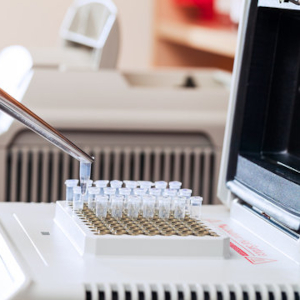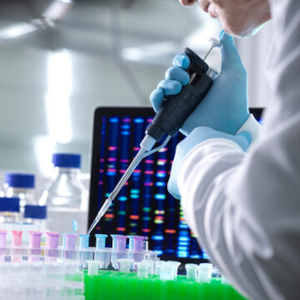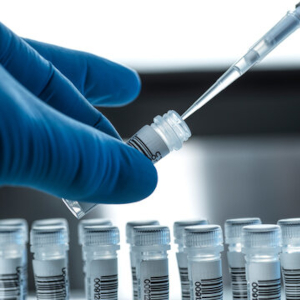
DNA/RNA biomarkers for the development of innovative diagnostics
Discovery and validation of new DNA/RNA biomarkers
Next-generation sequencing (NGS) and qRT-PCR technologies combined with specific bioinformatic programs aim to discover and validate new DNA/RNA/genomic/transcriptomic biomarkers. The objective is to develop new diagnostics for veterinary applications.
A sensitive and comprehensive method

Gene expression profiles (transcriptomes) through sequencing technologies (New Generation Sequencing, NGS) and specific bioinformatic tools aim at the acquisition of new DNA / RNA / genomic / transcriptomic data. This quantitative process allows to identify all biomarkers involved in each physiopathological situation in an exhaustive and sensitive way.
A sensitive and comprehensive method

Gene expression profiles (transcriptomes) through sequencing technologies (New Generation Sequencing, NGS) and specific bioinformatic tools aim at the acquisition of new DNA / RNA / genomic / transcriptomic data. This quantitative process allows to identify all biomarkers involved in each physiopathological situation in an exhaustive and sensitive way.
Bioinformatics for specificity
Specific bioinformatic programs and a database are fully required to analyze the results generated by these next generation sequencing systems (NGS), including sequence analysis, gene annotation, computational evolutionary biology, biodiversity measurement, regulation analysis, protein expression analysis, mutation analysis, etc.
After these bioinformatic treatments, all results can be implemented in an interactive database and can be compared to other gene expression profiles (transcriptomes) established by sequencing. Thus, each user can easily search and compare gene expression profiles (transcriptomes), and can select specific biomarker sets dedicated to a tissue or a pathology…

Bioinformatics for specificity

Specific bioinformatic programs and a database are fully required to analyze the results generated by these next generation sequencing systems (NGS), including sequence analysis, gene annotation, computational evolutionary biology, biodiversity measurement, regulation analysis, protein expression analysis, mutation analysis, etc.
After these bioinformatic treatments, all results can be implemented in an interactive database and can be compared to other gene expression profiles (transcriptomes) established by sequencing. Thus, each user can easily search and compare gene expression profiles (transcriptomes), and can select specific biomarker sets dedicated to a tissue or a pathology…
Validation of results through RT-qPCR

Real-time quantitative PCR can be used to validate DNA/RNA biomarkers identified in a previous step, to study global patterns of gene expression or to routinely analyze previously validated biomarkers. This technique provides absolute quantitative analysis of gene expression and rapid and accurate confirmation of genetic changes.
Real-time quantitative PCR :
- Is the most sensitive technique for mRNA detection and quantification.
- Can be used to quantify mRNA levels in much smaller samples
- Gives more accurate measurements and is much better suited to analyses performed on large numbers of samples
- Has been successfully developed into a reliable and easy-to-use standard method for the detection and/or quantification of nucleic acid sequences
- Reduces handling time and increases reliability
Validation of results through RT-qPCR

Real-time quantitative PCR can be used to validate DNA/RNA biomarkers identified in a previous step, to study global patterns of gene expression or to routinely analyze previously validated biomarkers. This technique provides absolute quantitative analysis of gene expression and rapid and accurate confirmation of genetic changes.
Real-time quantitative PCR :
- Is the most sensitive technique for mRNA detection and quantification.
- Can be used to quantify mRNA levels in much smaller samples
- Gives more accurate measurements and is much better suited to analyses performed on large numbers of samples
- Has been successfully developed into a reliable and easy-to-use standard method for the detection and/or quantification of nucleic acid sequences
- Reduces handling time and increases reliability




